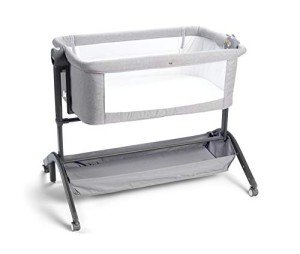The Tots And Cots Success Story You'll Never Imagine
페이지 정보
작성자 Aracelis 댓글 0건 조회 64회 작성일 25-08-12 11:43본문
Tots and Cots: A Comprehensive Guide for Parents
When it concerns making sure a safe and comfy sleeping environment for infants and toddlers, the choices moms and dads make-- varying from cribs to cots-- can considerably impact their well-being. Today's short article dives deep into the complexities of picking the very best sleeping arrangements for tots, emphasizing safety, design, performance, and how these choices develop as a child grows.
Understanding Tots and Cots
Tots usually refer to young children, particularly young children aged between 1 to 3 years, while cots are the sleeping arrangements particularly designed for infants and toddlers. The appropriate sleeping equipment for this age includes various types of cots, cribs, and young child beds.
Types of Cots
Numerous designs exist to meet the varied requirements of both parents and kids. Below is a list laying out the most typical types of cots offered:

Standard Crib
- A conventional crib is created for infants and typically consists of sides that can be adapted to different heights.
Convertible Crib
- This kind of crib can convert into a toddler bed, daybed, or full-sized bed as the child grows, making it a long-term investment.
Portable Crib
- Likewise referred to as travel cots, these are lightweight and quickly collapsible, ideal for taking a trip or smaller sized home.
Co-Sleeper
- A co-sleeper crib connects to the side of the parents' bed, permitting simple gain access to while making sure the baby has a separate and safe sleeping space.
Toddler Bed
- A toddler bed is a small bed that resembles a basic bed however is created specifically for young children, generally including safety rails.
Mini Crib
- Mini cribs are smaller than standard cribs, making them a great alternative for tight spaces, however they appropriate for infants only.
Security Considerations
Making sure security is vital when picking a cot for a child. Here are important security standards moms and dads should think about:
- Check for CPSC Certification: Ensure that the cot complies with the Consumer Product Safety Commission (CPSC) standards.
- Avoid Drop-Sides: Cots with drop-sides have actually been linked to safety hazards, and the most recent safety regulations forbid them.
- Use a Firm Mattress: A firm bed mattress reduces the risk of suffocation and need to fit snugly within the cot.
- Keep Bedding Simple: Use a fitted sheet and prevent pillows, comforters, and stuffed animals that can present suffocation risks.
- Follow Weight and Age Guidelines: Ensure the kid has not exceeded the cot's weight limitation and is still within the advised age.
Transitioning from a Cot to a Toddler Bed
The shift from a cot to a toddler bed can be an emotional turning point for both parents and kids. Here are actions to ease the shift:
Timing
Deciding when to shift can be subjective, however it's normally recommended to make the switch in between 18 months and 3 years, based on factors like:
- Physical Ability: If the kid is climbing up out of the cot.
- Potty Training: Consider transitioning if the kid is toilet training and requires easier access.
- Behavior: Nursery Decor Trends Exhibiting indications of maturity, such as following directions or expressing a desire for independence.
Tips for Making the Transition Smooth
Include Your Child: Let the kid pick their new bedding or bed design to instill excitement about the change.
Keep Routine Consistent: Maintain the kid's bedtime routine to supply convenience throughout this duration of change.
Explain the Change: Discuss the shift to a toddler bed favorably, making it seem like a great adventure.
Security Measures: Place the bed against the wall or usage bed rails to prevent falling throughout sleep.
Choosing the Right Bed
When selecting a young child bed, parents need to consider aspects like:
- Height: Low-profile beds are perfect for toddlers who might fall out during sleep.
- Resilience: Ensure the bed can stand up to active play in addition to sleep.
- Style and Design: Choose a style that complements the kid's space and is interesting the kid.
Choosing the right cot for your kid can be a complicated process, however comprehending the alternatives offered, key security factors to consider, and the right timing for transitioning to a young child bed can make this journey easier for parents. Investing effort and time into these choices will guarantee that your child has a safe, comfortable, and nurturing sleep environment.
Frequently asked questions
1. What is the distinction between a cot and a crib?
- A cot is usually a smaller sized bed developed for more youthful young children, while a crib is a larger bed that is generally appropriate for infants approximately 3 years of ages.
2. When should I move my kid from a crib to a toddler bed?
- The transition time is normally in between 18 months and 3 years; this change is based upon the kid's physical capabilities and behavioral indications.
3. How can I ensure my kid is safe while sleeping?
- Always adhere to safety standards, utilize a company bed mattress with a simple bed linen arrangement, and monitor the cot's weight limitation.
4. What should I do if my child attempts to climb out of the cot?
- If your kid is climbing out, it might be time to consider transitioning to a toddler bed to prevent falls.
5. Can I utilize the very same mattress when transitioning?
- Normally, it is best to replace the crib mattress with one that is specific to the young child bed. Guarantee it fits comfortably and complies with safety requirements.
By considering these aspects, parents can model healthy sleep routines and supply their children with a protected environment that promotes relaxing sleep. Buying quality sleeping arrangements will add to the kid's total advancement and happiness.
댓글목록
등록된 댓글이 없습니다.


